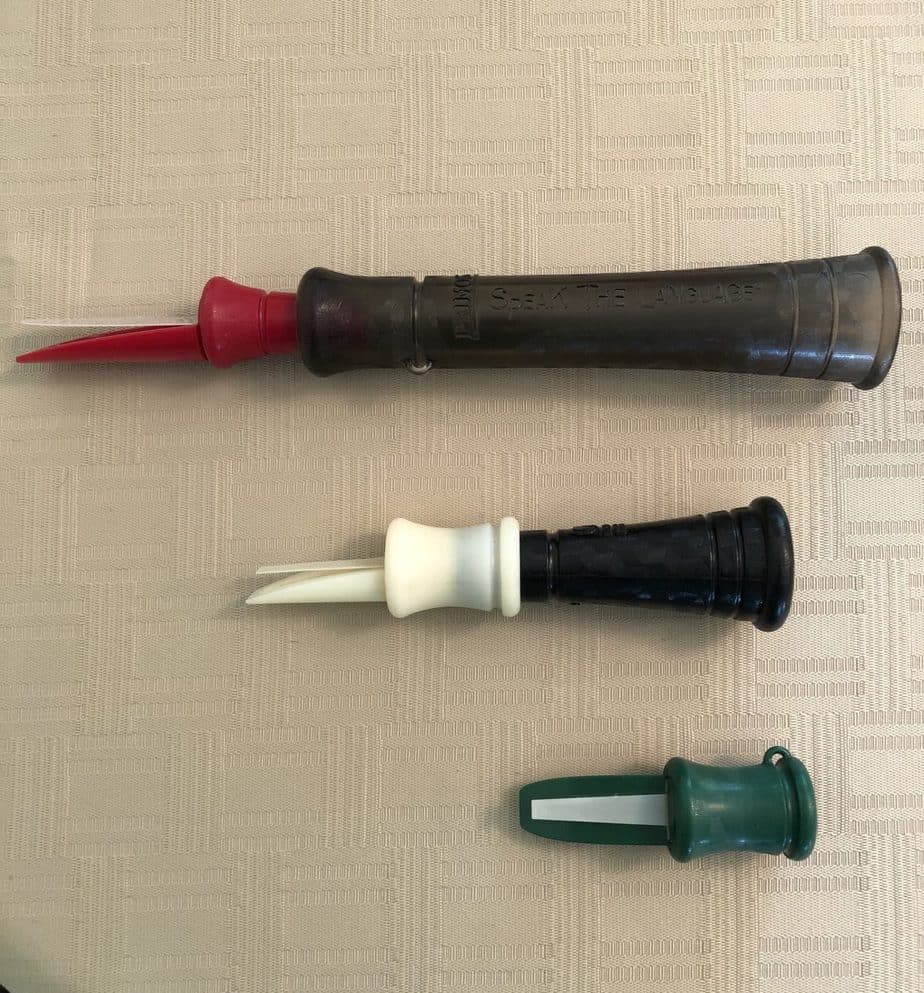Using mouth calls for coyotes has exploded in popularity, as many predator hunters enjoy the sense of accomplishment they get from calling in a coyote, bobcat, or fox with their own skill.
While it might seem complicated, it is actually quite easy to learn if you spend a little bit of time with it. Almost every mouth call on the market today comes with instructions on how to use it on the package, and there are tons of YouTube videos to teach yourself as well.
Two of the most popular mouth calls are the Primos Hot Dog and the Primos Lil’ Dog. If you compare the two on a high-level, you can think of it this way. They are both easy to use, both offer good sound, and are similar in price. The big differentiator is in the volume of sound. The Hot Dog wins in this category. However, they are both good options for various resons.
The remainder of this article will give you a detailed overview of each, a brief how to use, and a comparison.
Primos Hot Dog
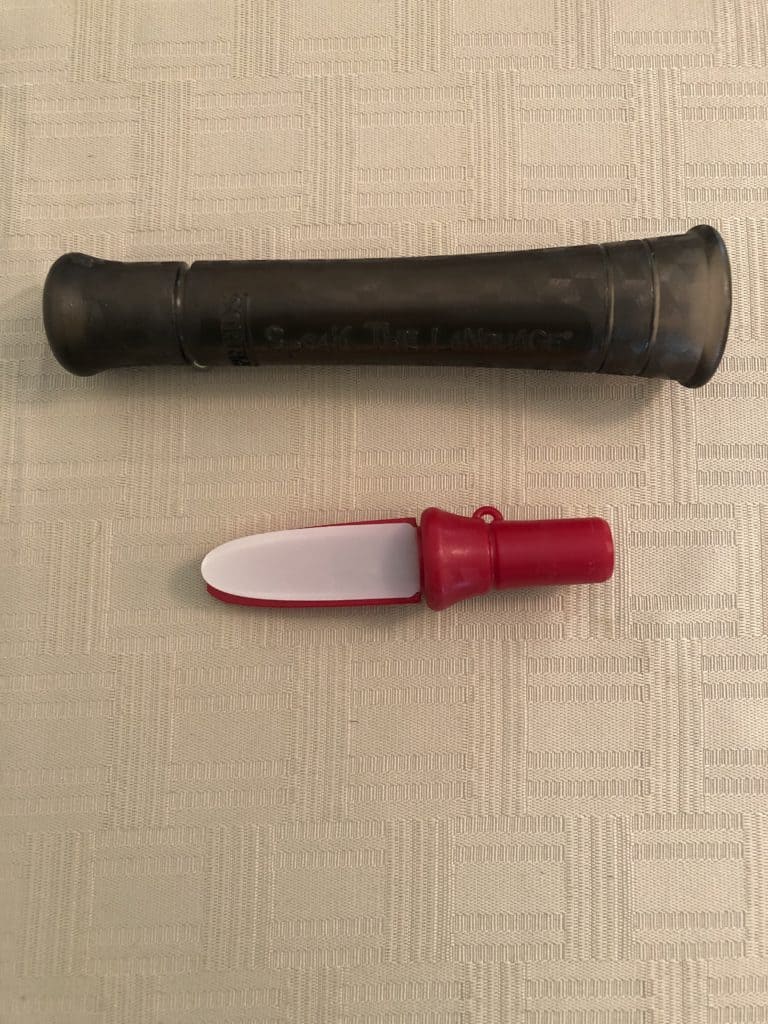
The Primos Hot Dog was built with versatility in mind. Built with a detachable mouthpiece, hunters have the ability to use this call to make a wide variety of sounds at a wide variety of distances and wind conditions.
Another unique benefit of this call is the ability to sound like two different coyotes by attaching and detaching the mouthpiece to the horn.
Whether you want to make coyote vocalizations, bird distress, rabbit distress, rodent distress, or even deer distress, it can be done.
Specifications and Features
- Capable of producing sounds from mice to deer
- Mouthpiece detaches from horn for better volume control
- Includes a lanyard
- Horn produces smooth howls
- Ultra-loud and raspy howler for long-range coyote location
- Durable synthetic construction
- Mouthpiece includes markings to flatten the learning curve
- MSRP: $26.99
- Street Price: $18.90
How to Use
The Primos Hot Dog is not hard to learn how to use. The best way to learn how to use this call is to watch YouTube videos, as you will be able to hear, as well as see, how different actions you do affect the sound.
For a general procedure of using the call, all you need to do is bite down or put your lip down on the reed of the call and send air through the call in a smooth way, so that there are no loud cracks or squeaks when you do it.
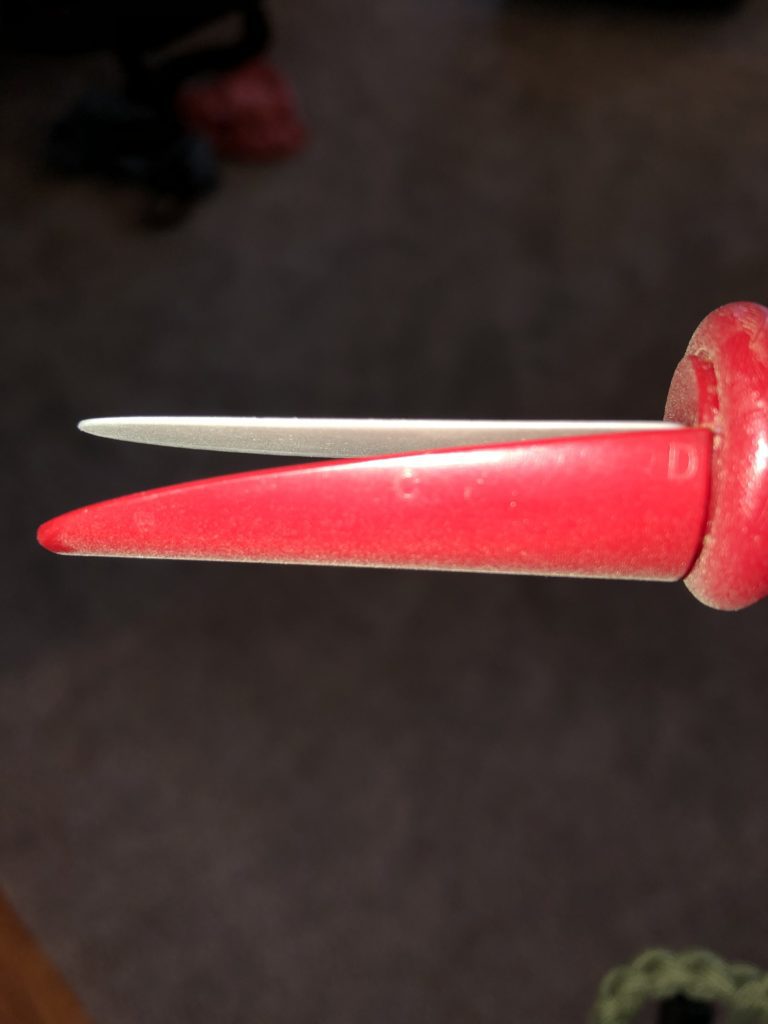
As can be seen in the picture above, the Hot Dog mouthpiece has markings A, B, C, and D. You can’t see the A and B because they have worn off through use.
As a general reference, use the following markings:
- A: Rodent sounds
- B: Cottontail and other rabbits
- C: Coyote pups, female coyote howls, and fawn distress
- D: Mature male coyotes and older deer distress
Watching YouTube videos will teach you how to make different sounds with the air you send through. If you spend even half an hour watching videos and practicing, you should for sure have the basics nailed down.
In the Field
Predators have responded very well to the Primos Hot Dog in my experience. The way that I like to start my hunts is by removing the horn from the mouthpiece and blowing a cottontail or rodent distress for several minutes.
The Hot Dog really excels at this, as you can get very low volume and lots of rasp if you want. Once I’ve done this, I put the horn back on and howl.
The great thing about the Primos Hot Dog is that the horn makes it as loud as you want essentially. You can detach the horn for quieter howls, but the length of the horn really projects sound well.
This call has held up very well in the field and never plugs due to the cold freezing spit or moisture in it.
The Good and the Bad
Pros
Massive Variety of Sound
This call provides excellent value to the new or experienced coyote caller. You can make so many noises with this call and it can be used to call in all kinds of animals, be it coyotes, fox, bobcats, bear, mountain lions, or even crows.
Easy to Learn & Use
By watching YouTube videos and just experimenting, you can master this call quickly. It is important to practice frequently so you don’t lose all your skills you have gained.
Loud
The Hot Dog is excellent for reaching way out there to locate long-distance coyotes. Attaching the horn amplifies the volume in a big way, and it really shines in windy conditions as well.
Cons
Somewhat Large
While its length gives it the volume it needs to reach way out there, this can be a downside of the call to some. It is roughly 9 inches long with the mouthpiece and horn attached. It has never been an issue for me, but I know some people don’t like the length of the call.
Primos Lil’ Dog
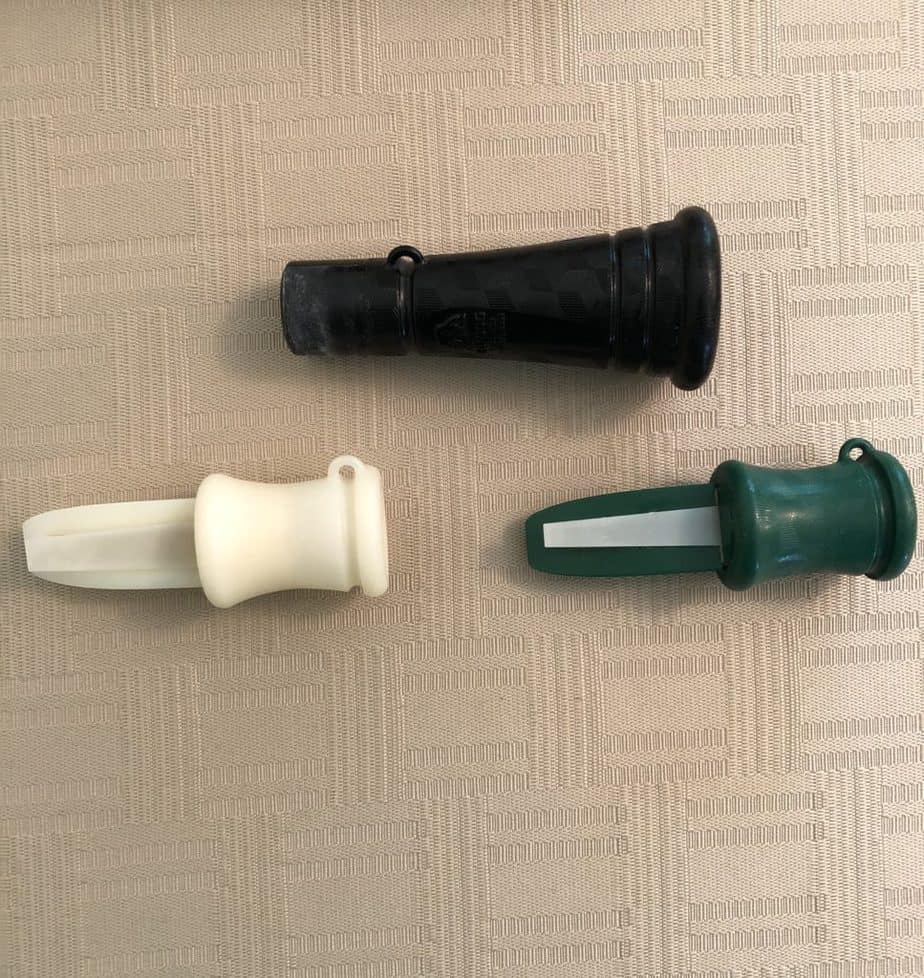
The Primos Lil’ Dog predator call was definitely also built with versatility and ease of use in mind. The Lil’ Dog provides excellent volume and range in a more compact package.
This call comes with two different mouthpieces, green and white. The white one is for longer distances and the green one is for close-in work.
The Lil’ Dog also comes with a horn for increased range and volume. The Lil’ Dog makes all kinds of sounds from rodent and bird distress to male coyote vocalizations.
Specifications and Features
- White mouthpiece for longer distances
- Green mouthpiece for close distances
- Detachable horn that amplifies volume for either mouthpiece
- Mouthpiece markings make it easier to learn
- Comes with a lanyard
- Synthetic construction that is built to last
- MSRP: $21.99
- Street Price: $16.19
Basics of Use
The Lil’ Dog is intuitive to use, and after a little bit of practice, you’ll be doing great. The easiest way to self-teach the Lil’ Dog is to watch YouTube videos, as it is easier to see how actions affect the noise coming from the call.
For a quick set of instructions on using the call, simply bite down or put your lip down on the reed of the call and push air through the call in an even manner, so the tone doesn’t crack or squeak.
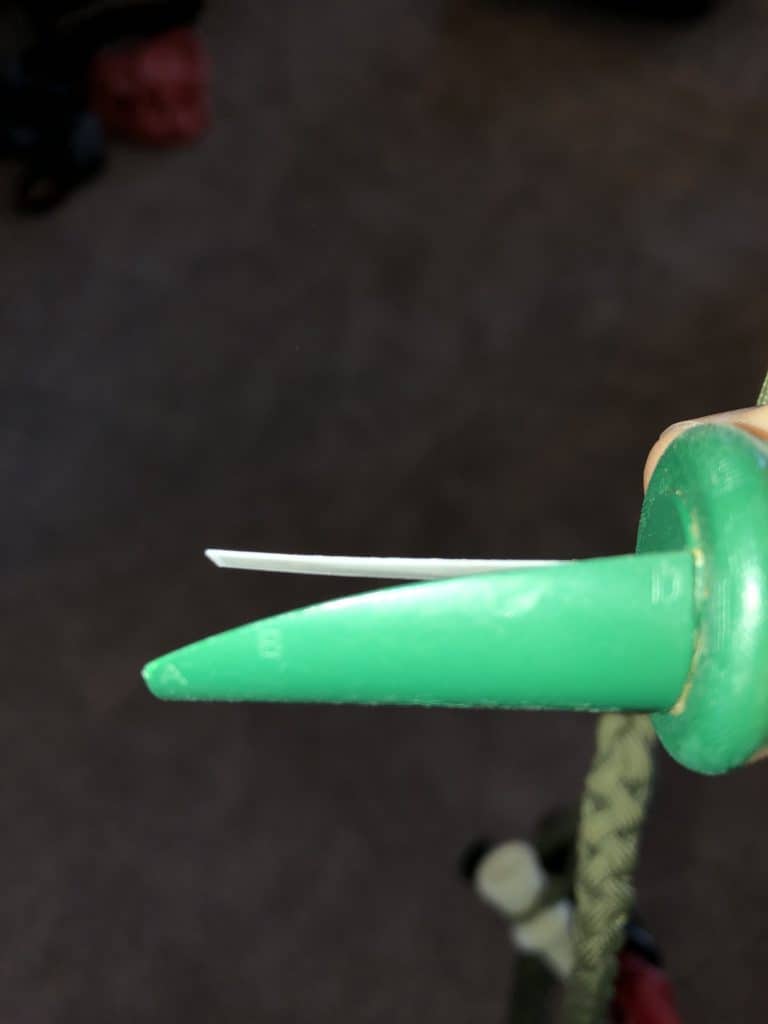
The Lil’ Dog mouthpiece comes with four letter markings, A, B, C, and D. It is hard to see C in the picture, as it has worn off over time. To use these markings, bite down or put your lip down in the following places for the following sounds.
As a general reference, use the following markings:
- A: Rodent or bird distress
- B: Coyote pup, cottontail rabbit, and bigger bird distress
- C: Coyote pup distress, big cottontail or jackrabbit, fawn distress, and female coyote vocalizations
- D: Male coyote vocalizations and deer distress
Spend some time experimenting in addition to YouTube videos, and you should have the basics down in about half an hour.
In the Field
The Lil’ Dog is one of my favorite calls hands-down. I love starting my hunts using the green mouthpiece without the horn, as I love the control you get from the green mouthpiece on the high end of the scale with rodent and bird distress.
Once I do that for a while, I like to switch to the white mouthpiece with the horn and really blast some rabbit distress and coyote howls.
The white mouthpiece and the horn combined give very good range for the size of the call. All in all, the Primos Lil’ Dog is great in the field. It has called in coyotes, fox, and a bobcat for me.
The Good and the Bad
Pros
Versatility
Much like the Hot Dog, the Lil’ Dog is very versatile. It can be used to produce many different sounds. It especially excels on the high-pitch end of the spectrum, as the green mouthpiece is excellent for bird and rodent distress.
Easy to Learn & Use
The Hot Dog and Lil’ Dog share the same intuitive design of the mouthpiece. They are both relatively simple to learn and will be easy to use effortlessly in the field.
Compact
The compact size of this call is awesome. You can put it virtually anywhere and it will feel comfortable.
Cons
Volume
While it is relatively loud for its size, the Lil’ Dog is lacking in the volume department, especially in windy conditions. The shorter size of the horn doesn’t help it cut through the wind as well as the Hot Dog.
Hot Dog Vs. Lil’ Dog: Which One Is the Better Buy?
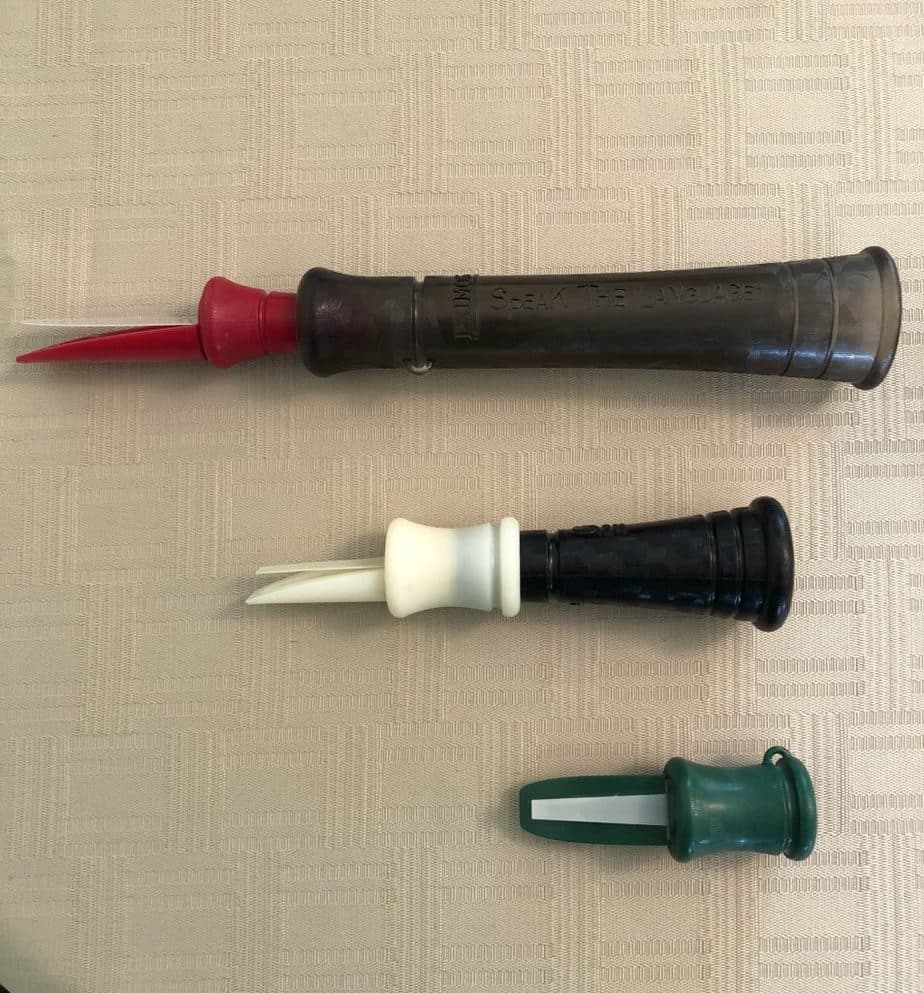
As can be seen from the reviews of the products, the Primos Hot Dog and Lil’ Dog are both great predator calls for predator hunters, whether they are brand new to mouth calls or they have been doing it for years. Continue reading for a more in-depth comparison of these two calls.
Ease of Use: Draw
Both of these Primos calls feature roughly the same mouthpieces with slightly different reeds and different sizes of horns.
Both the Hot Dog and the Lil’ Dog use relatively the same reed placement and if you can use one well, you can probably use the other one just as well. On the ease of use category, they stack up the same.
Variety of Sound: Draw
This is a tricky one, as both the Hot Dog and the Lil’ Dog have their merits.
The Hot Dog provides more versatility on the low-pitch end of the scale than the Lil’ Dog. For example, you can do a very deep male coyote howl on the Hot Dog, while the deepest you can get on the Lil’ Dog won’t come even close.
That being said, the Lil’ Dog has the benefit on the high-pitch end of the scale. The green mouthpiece of the Lil’ Dog is excellent with rodent and bird distress and gives you great control over it, whereas it is slightly harder to do these noises on the Hot Dog.
Volume: Hot Dog
While the Lil’ Dog puts up a valiant effort, the Hot Dog most definitely wins this category.
The Hot Dog’s large horn allows for a massive amplification of the sound and can be heard from a long ways off. The Lil’ Dog, while still being plenty loud for most situations, loses out whenever there are windy conditions.
If you are looking for a very long range caller, pick the Hot Dog.
Price: Draw
Depending on where you are looking to buy from, both the Primos Hot Dog and the Primos Lil’ Dog can be found anywhere in the $20-$25 range. They both provide an excellent value for the durability and versatility you are getting from these calls.
Conclusion
While you could debate for hours about the merits of the Primos Hot Dog in comparison to the Primos Lil’ Dog, there is no point.
Both calls are made of excellent quality and will last even the most extreme hunter decades. I have owned mine for at least 10 years and the worst thing to happen to them is the A, B, C, and D somewhat wearing off on the mouthpiece.
You can’t go wrong with either of these calls. Make sure you take into account whether or not you want the ability for more range and whether or not you want a better low-pitch or high-pitch call. That should help you narrow down exactly which one you want to buy.

